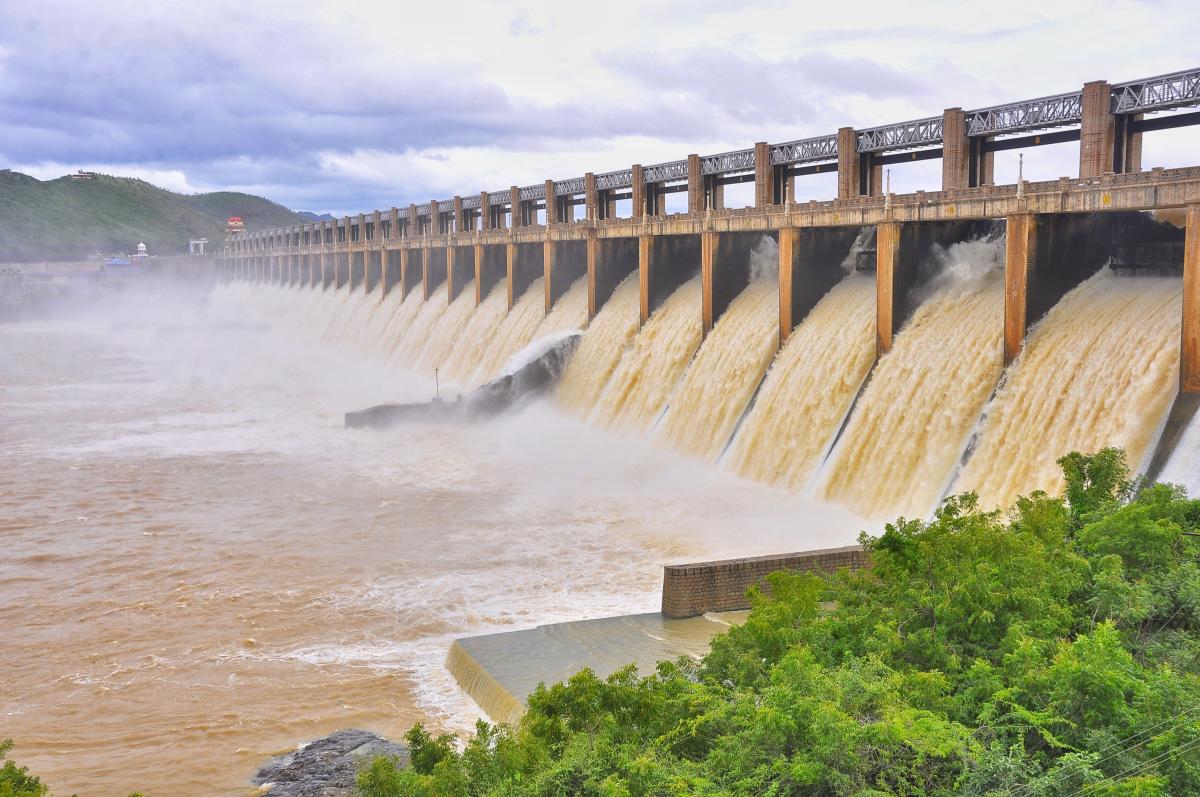
Reservoirs in Cauvery, Krishna basins brim with water; Mettur inflow up
While the Southwest monsoon wreaked havoc in the northern regions of India, it offered a sigh of relief to farmers of Karnataka and Tamil Nadu in the Cauvery delta areas with bountiful rains this season.

While the Southwest monsoon wreaked havoc in the northern regions of India, it offered a sigh of relief to farmers of Karnataka and Tamil Nadu in the Cauvery delta areas with bountiful rains this season.
With the coastal and Malnad region receiving 50-60 percent excess rainfall in August, the reservoirs in the Cauvery basin — Hemavathi, Harangi, Krishna Raja Sagara, and Kabini —which reached its full capacity on Friday (August 21) morning, were brimming with water.
With the surplus water getting released to Tamil Nadu, the inflow of water into the Mettur dam increased. The amount of water released from the KRS and Kabini reservoirs for delta irrigation touched 60 thousand cubic feet per second on Friday morning.
During the Southwest monsoon, though rains eluded the Malnad region in July, the August rains remained good and farming activities were in full swing.
H K Lakshmi Devamma, a farmer in Mandya district’s K R Pete, who is dependent on the water from the Hemavathi reservoir, said that amid the COVID-19 crisis, several farmers in her village planted more crops this year due to good rains.
Related news: Torrential rains wreak havoc in Nilgiris, western Tamil Nadu
“While we planted the paddy crop, we saw many farmers opting for sugarcane crops with more acreage. Also, with the dying Pandavapura sugar mill reopening, it rekindled the hope for sugarcane crops this year,” Lakshmi Devamma said.
Sugarcane being a major crop in the Cauvery belt, farmers in the upstream and downstream of Kaveri river expect a bumper crop this year.
Krishna basin
Similarly, in the Krishna basin, water levels in Tungabadhara, Malaprabha, Ghataprabha, and Bhadra reservoirs neared 90-95 percent of their full capacity as of Friday. With torrential rains in Maharashtra leading to excess outflow of water from Maharashtra’s Koyna dam into Karnataka, the government, fearing floods (after two consecutive floods in 2018 and 2019), released water from the Almatti and Narayanapura dams this year.
Related news: Munnar landslide: 24 children missing; search on amid heavy rains
The water levels in both dams were kept at 70-80 percent levels. Nearly 3.8 lakh cusec of water was released from the reservoirs in the Krishna basin on August 20. Several bridges and roads remain submerged in Belagavi, Gadag, Bagalkot, and Raichur due to incessant rains over the past week.
Offering ‘Bagina’ (prayers) to River Kaveri
With the KRS dam full, Chief Minister B S Yediyurappa offered customary prayers to river Kaveri by way of ‘bagina’ on Friday. Bagina (Baagina) is a practice of offering prayers by giving grains, jaggery, bangles, turmeric, a blouse, kumkum, betel leaves, fruits, and nuts in a bamboo tray. Though it is part of the festivity where ‘Baagina’ is exchanged among women in the household, Late Chief Minister Devaraj Urs started the practice of offering it to the KRS in 1979. All other CMs followed suit if the reservoirs had a good inflow of rain water. Yediyurappa is the second Chief Minister, besides S M Krishna, to hail from Mandya and offer ‘Baagina’.
Meanwhile, Yediyurappa also had to face the heat of the protests by farmers’ organisations in Srirangapatna and H D Kote taluks. The farmers protested against the government’s decision on the Land Reforms Amendment that allowed non-agriculturists to buy farmlands, and also against illegal mining around the KRS.


